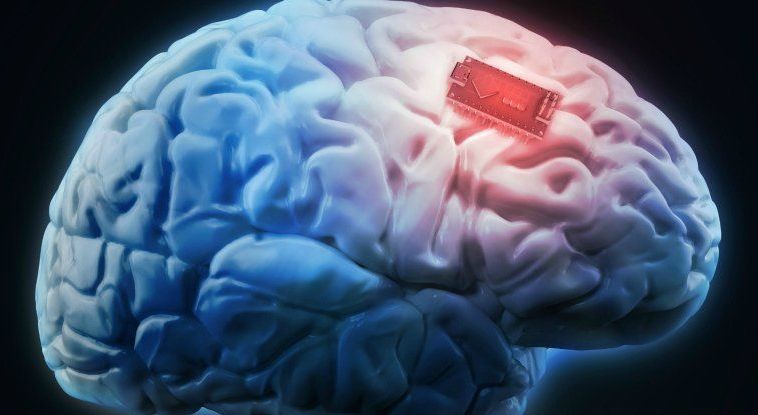Archive for the ‘neuroscience’ category: Page 877
Nov 23, 2017
Smart people have better connected brains
Posted by Dan Kummer in category: neuroscience
Die Goethe-Universität ist eine forschungsstarke Hochschule in der europäischen Finanzmetropole Frankfurt. Lebendig, urban und weltoffen besitzt sie als Stiftungsuniversität ein einzigartiges Maß an Eigenständigkeit.
Nov 20, 2017
The Policy Prognosis for AI: Winner of the SSUNS 2017 Essay Contest
Posted by Derick Lee in categories: economics, education, Elon Musk, employment, health, neuroscience, policy, quantum physics, robotics/AI, transhumanism
Furthermore, with advancements in quantum computing and machine learning, many notable public figures, including Stephen Hawking and Elon Musk, have indicated a growing concern with the imminent threat of AI surpassing human intelligence (Gosset, 2017). For instance, Darrell M. West, a political scientist, has proposed a protectionist framework that appeals to transhumanism, in which he restructures socioeconomic policy to account for changes in technology-induced unemployment. In particular, he posits that “Separating the dispersion of health care, disability, and pension benefits outside of employment offers workers with limited skills social benefits on a universal basis” (West, 2015). Expounding upon this equivocation, a more viable solution to potential unemployment is the realization of a multi-faceted policy which advocates the improvement of STEM-related education on a broad economic base, with habituation programs for the unskilled workforce. That is, with the implementation of appropriate and reformatory policies concerning the future development of AI technologies, this sector provides an economic incentive for new job creation, compatible with industrial development.
Prompt: What are the political implications of artificial intelligence technology and how should policy makers ensure this technology will benefit diverse sectors of society?
In recent years, the rapid development and mass proliferation of artificial intelligence have had various sociopolitical implications. It is a commonly held belief that the emergence of this technology will have an unprecedented impact on policies and political agendas. However, such discourse often lacks a geopolitical and social dimension, which limits the breadth of analysis. Further, little consideration has been given to potential employment and public policy reform. Growing concerns have been raised regarding the potential risk inherent in the evolution of strong AI, which provides the basis for transhumanism, whereby it is conjectured that AI will eventually be able to surpass human intelligence. As such, it is incumbent upon the upcoming generation of policymakers to implement and adopt necessary measures, which will provide a careful, multilateral framework, ultimately achieving market-oriented technological advancement with respect to employment and public policy.
Continue reading “The Policy Prognosis for AI: Winner of the SSUNS 2017 Essay Contest” »
Nov 19, 2017
Why I’m Digging Deep Into Alzheimer’s
Posted by Genevieve Klien in categories: biotech/medical, neuroscience

This effects whole families and their emotional well being!
Bill Gates shares his thoughts on Alzheimer’s disease and his hopes for accelerating progress to find a breakthrough.
Nov 18, 2017
Neuroscience Is Helping Us Build a Machine With Consciousness
Posted by Genevieve Klien in category: neuroscience

I always wondered if this was possible.
In a paper published, Science describes a team of neuroscientists striving to grasp the computational aspect of consciousness, and port it to a machine.
Continue reading “Neuroscience Is Helping Us Build a Machine With Consciousness” »
Nov 15, 2017
Doctors are gene editing inside the body of a living human for the first time
Posted by Montie Adkins in categories: bioengineering, biotech/medical, genetics, neuroscience

He is the first patient to receive an experimental gene therapy as part of a clinical trial. Earlier this week, Sangamo Therapeutics injected Madeux with viruses containing a package of gene-editing material, according to the AP. The hope is that these viruses will enter Madeux’s cells, specifically liver cells, inject the missing gene at the right place in his DNA. Only about 1% of the liver’s cells need to be fixed, and give his liver the ability to produce the enzyme he has been missing all his life.
Brian Madeux’s life hasn’t been easy. So far, he’s had 26 operations to fix problems in everything from hernias to eyes. He has a rare disease called Hunter syndrome, which is caused by the lack of a gene that’s used to produce an enzyme that breaks down certain carbohydrates. As a result, the carbohydrates build up in his body’s cells causing all sorts of problems.
Continue reading “Doctors are gene editing inside the body of a living human for the first time” »
Nov 15, 2017
For The First Time Ever Scientists Have Boosted Human Memory With a Brain Implant
Posted by Klaus Baldauf in categories: biotech/medical, cyborgs, Elon Musk, engineering, neuroscience
With everyone from Elon Musk to MIT to the US Department of Defense researching brain implants, it seems only a matter of time before such devices are ready to help humans extend their natural capabilities.
Now, a professor from the University of Southern California (USC) has demonstrated the use of a brain implant to improve the human memory, and the device could have major implications for the treatment of one of the US’s deadliest diseases.
Dong Song is a research associate professor of biomedical engineering at USC, and he recently presented his findings on a “memory prosthesis” during a meeting of the Society for Neuroscience in Washington D.C. According to a New Scientist report, the device is the first to effectively improve the human memory.
Nov 14, 2017
Security Breach and Spilled Secrets Have Shaken the N.S.A. to Its Core
Posted by John Gallagher in categories: business, cybercrime/malcode, neuroscience
A serial leak of the agency’s cyberweapons has damaged morale, slowed intelligence operations and resulted in hacking attacks on businesses and civilians worldwide.
Nov 12, 2017
Listen: Adam Savage interviews Natasha Vita-More
Posted by Lily Graca in categories: cosmology, evolution, neuroscience, transhumanism
The SYFY25: Origin Stories Podcast, hosted by Adam Savage (editor-in-chief, tested.com and former co-host of Mythbusters), is a nostalgic celebration of all things science fiction. In this podcast series Adam sits down with creators, thought-leaders, and celebrity fans to discuss the moments, people, and milestones that have changed the genre universe forever. From revealing personal anecdotes to deep philosophical discussions.
Transhumanist philosopher Natasha Vita-More chats with Adam and explains what transhumanism means for us regular humans, how it will impact the evolution of humanity, and close we are to uploading our brains into databases, ensuring our immortality.
Continue reading “Listen: Adam Savage interviews Natasha Vita-More” »
Nov 12, 2017
This $100-million Startup Plans to Put Chips Into Human Brains to Enhance Intelligence
Posted by Klaus Baldauf in categories: computing, neuroscience

https://youtube.com/watch?v=ySsv5-jSqss
A startup with a $100 million investment wants to implant chips into human brains to enhance their abilities.












